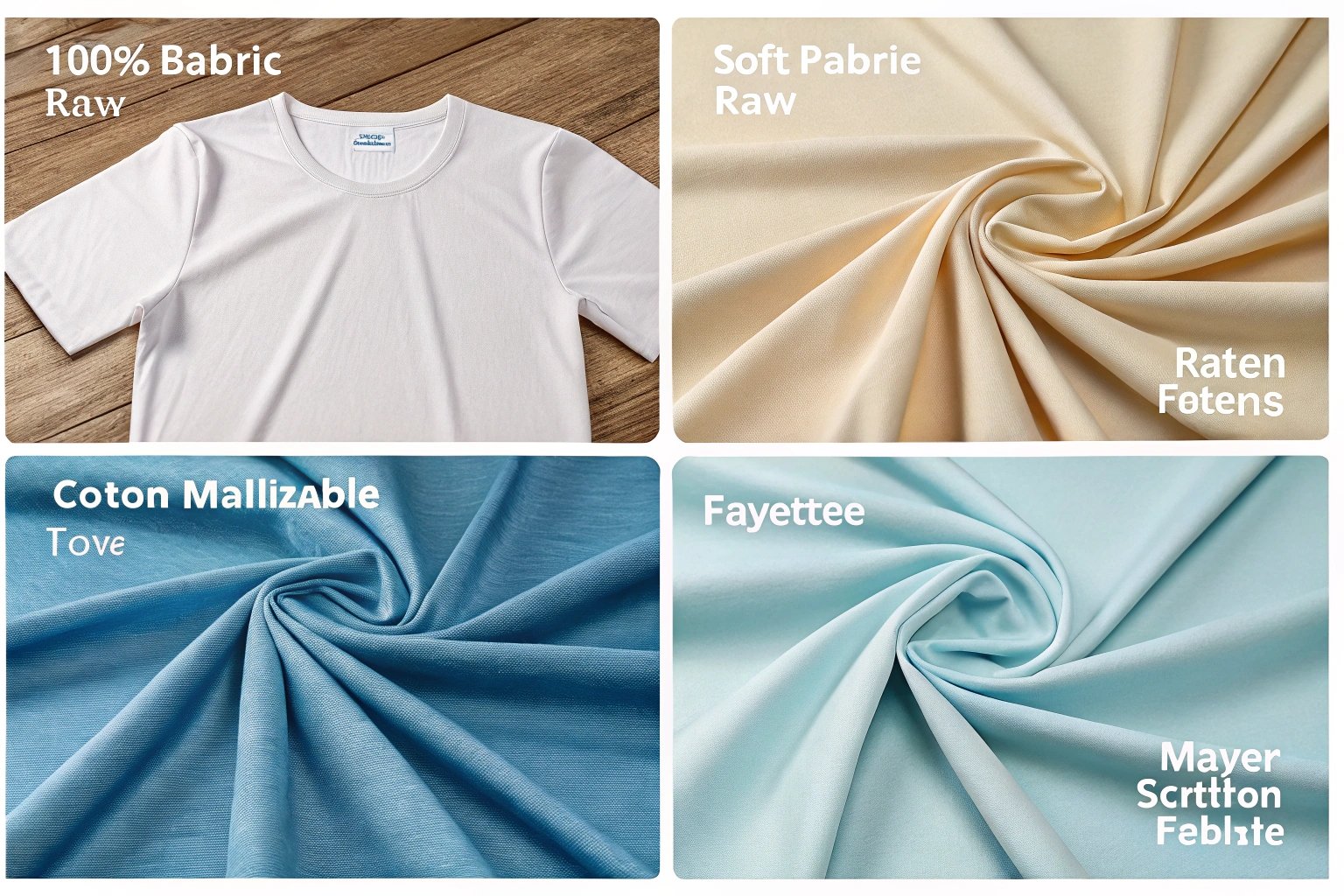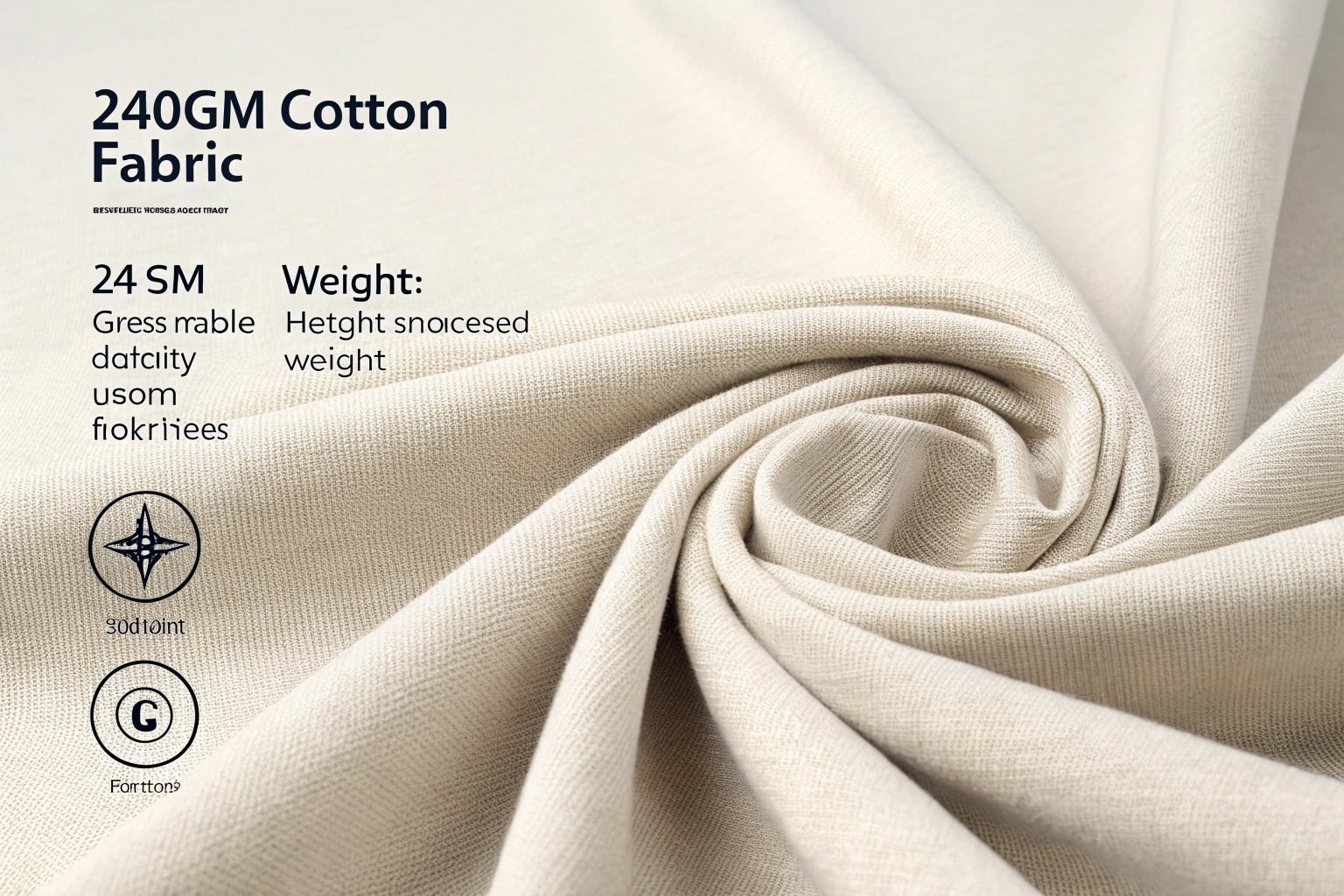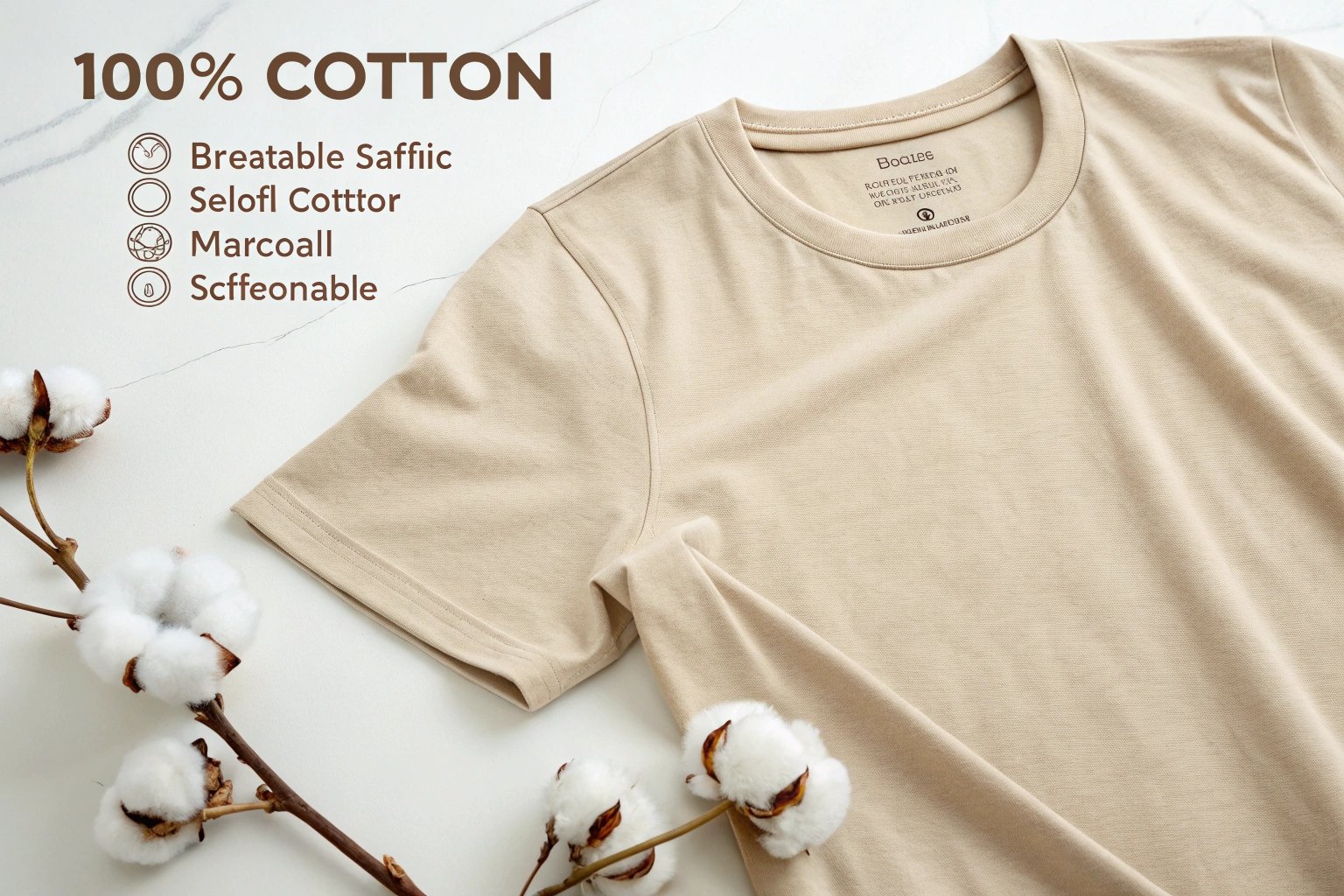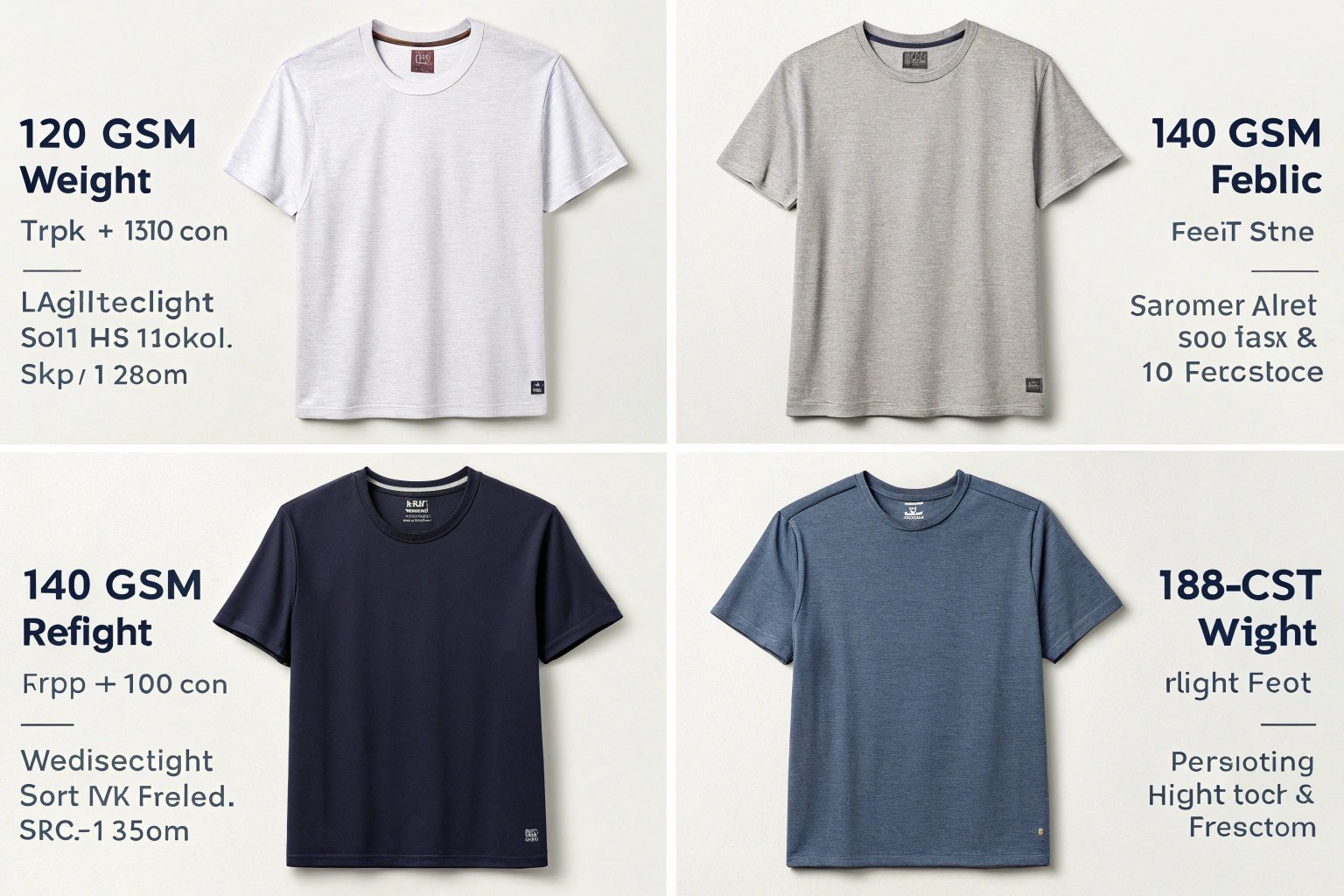When it comes to creating the perfect T-shirt, fabric choice is crucial—not only for comfort but also for durability, style, and overall performance. While cotton remains the most popular fabric, there are many other factors to consider, such as fabric weight, weave, and blend. In this guide, we’ll cover everything you need to know to make an informed choice, whether you’re a designer, retailer, or consumer looking for the best T-shirt fabric.
Choosing the right fabric isn’t just about picking the most popular option. It’s about understanding the unique needs of your target audience. Whether it’s an ultra-comfortable organic cotton tee for eco-conscious customers or a durable polyester-blend shirt for activewear, knowing what each fabric offers can elevate your T-shirt designs to the next level. Learn more about fabric types and their uses..

Choosing the right fabric isn’t just about picking the most popular option. It’s about understanding the unique needs of your target audience. Whether it’s an ultra-comfortable organic cotton tee for eco-conscious customers or a durable polyester-blend shirt for activewear, knowing what each fabric offers can elevate your T-shirt designs to the next level.
What fabric is best for T-shirts?
When determining the best fabric for T-shirts, several factors come into play, including the fabric’s weight (GSM), fiber content, and the desired finish. Let’s break down the best fabric options based on various requirements.

Cotton is the classic fabric for T-shirts, loved for its softness and breathability. However, blends with other fibers like polyester, rayon, and elastane are increasingly popular, especially for T-shirts meant for activewear or fashion-forward styles.
Popular Fabric Options for T-shirts
| Fabric Type | Characteristics | Best Use Case |
|---|---|---|
| 100% Cotton | Soft, breathable, natural; available in various weaves | Basic, comfortable T-shirts for everyday wear |
| Cotton/Polyester Blend | Durable, moisture-wicking, wrinkle-resistant | Sportswear, casual T-shirts, high-performance tees |
| Organic Cotton | Eco-friendly, soft, breathable | Sustainable fashion, organic clothing lines |
| Tri-Blend (Cotton/Rayon/Polyester) | Soft, drapey, stretchy, lightweight | Fashion-forward, trendy tees |
| Performance Fabrics | Polyester, spandex, quick-drying, moisture-wicking | Athletic, workout, and performance tees |
The choice of fabric is driven not just by the material itself, but by the intended purpose of the T-shirt. For example, 100% cotton is the go-to choice for comfort, but for activewear, a cotton-polyester blend offers a more durable and moisture-wicking option.
Is 240 GSM cotton good?
240 GSM (grams per square meter) refers to the fabric’s weight, which plays a significant role in its feel, durability, and overall performance. A T-shirt with a 240 GSM weight is considered relatively heavy, making it suitable for specific use cases.

240 GSM cotton is generally considered good for T-shirts that need more structure and durability, like those meant for outdoor activities, workwear, or fashion-forward designs. It has a sturdier feel than lighter cotton fabrics, offering better resistance to wear and tear while still maintaining breathability.
Benefits of 240 GSM Cotton
- Durability: 240 GSM cotton is thicker and more resistant to wear than lighter cotton fabrics.
- Structure: The heavier weight gives the T-shirt a more structured, premium look, which is desirable for trendy, stiff-fit T-shirts.
- Comfort: While it’s heavier, 240 GSM cotton is still breathable, making it a good choice for cooler climates.
However, for warmer weather, this weight might feel too thick, and it could be less breathable compared to lighter GSM options. It is ideal for cooler months or structured designs, like statement T-shirts or outerwear-inspired pieces.
Is a 100% cotton T-shirt good?

100% cotton T-shirts are a classic choice for both comfort and breathability. Cotton is soft, naturally hypoallergenic, and highly breathable, making it a staple for comfortable everyday wear. However, while cotton T-shirts are extremely popular, they come with both pros and cons depending on the specific use case.
Pros of 100% Cotton T-shirts
- Breathability: Cotton naturally allows air to pass through, making it ideal for everyday wear, especially in warm climates.
- Comfort: It’s soft and gentle on the skin, making it perfect for long-lasting comfort.
- Eco-Friendly: If sourced from organic cotton, this fabric is also better for the environment compared to synthetic materials.
Cons of 100% Cotton T-shirts
- Wrinkling: Cotton tends to wrinkle easily, requiring more care when washing and wearing.
- Shrinkage: It can shrink in the wash if not properly treated, which can affect fit and longevity.
- Durability: While durable, pure cotton is more susceptible to wear and tear over time, especially if it’s not treated with a special finish.
For brands targeting comfort-focused consumers, a 100% cotton T-shirt is still a solid choice, but integrating finishes that prevent shrinking or wrinkling (such as pre-shrinking or garment-dyeing) can elevate the product’s longevity and appeal.
Which GSM fabric is good for T-shirt?

When selecting a fabric for T-shirts, GSM (grams per square meter) is one of the most important factors to consider. It directly affects the weight, feel, and durability of the shirt. Here’s a breakdown of which GSM fabrics work best for different types of T-shirts.
| GSM Range | Characteristics | Best Use Case |
|---|---|---|
| 120-140 GSM | Lightweight, breathable, soft | Summer tees, basic T-shirts, fashion tees |
| 160-180 GSM | Mid-weight, soft yet structured | Standard tees, comfortable everyday wear |
| 180-200 GSM | Heavier, durable, more substantial feel | Trendy T-shirts, fashion-forward designs |
| 200+ GSM | Thick, sturdy, high-end feel | Streetwear, premium fashion, structured designs |
- 120-140 GSM fabrics are best for lightweight, summer T-shirts. These are perfect for basic tees or fashion pieces that need to be breathable and soft without adding too much bulk.
- 160-180 GSM fabrics strike the balance between comfort and durability, suitable for both everyday wear and casual fashion.
- 200+ GSM fabrics provide a heavier feel and structure, which is perfect for streetwear, high-end fashion, or T-shirts with a more premium look and feel.
Understanding GSM is vital for creating a product that aligns with your target audience. Lightweight fabrics offer comfort, while heavier fabrics provide a more premium experience and longer durability.
Crafting T-shirts Based on Customer Needs
Incorporating customer needs into fabric selection can make or break a product line. Here are a few key points to consider when selecting fabrics for your T-shirt collection:
Eco-Friendly Choices
Consumers are increasingly aware of the environmental impact of their clothing choices. Organic cotton and recycled polyester are great options for brands aiming to appeal to environmentally conscious buyers.
Activewear Focus
For activewear-focused brands, performance blends like cotton-polyester mixes or polyester-elastane blends offer moisture-wicking properties and durability without sacrificing comfort.
Premium Feel
To create a luxurious feel, opt for combed cotton or tri-blend fabrics (cotton, polyester, and rayon). These materials offer a soft, silky feel and better durability, making them perfect for high-end fashion T-shirts.
Conclusion
Choosing the best fabric for T-shirts isn’t a one-size-fits-all decision. Depending on the style, season, and target audience, selecting the right GSM, fiber content, and finish will make a significant impact on the comfort, look, and longevity of the T-shirt. Whether it’s a lightweight summer tee, a heavy-duty streetwear piece, or a performance-focused design, understanding fabric characteristics and customer needs is key to creating a successful T-shirt line.
[^1]: Nylon – Wikipedia: A detailed explanation of nylon’s properties, history, and applications across various industries.
[^2]: Fabric – Wikipedia: An in-depth article explaining different types of fabrics and their uses in fashion and textiles.

